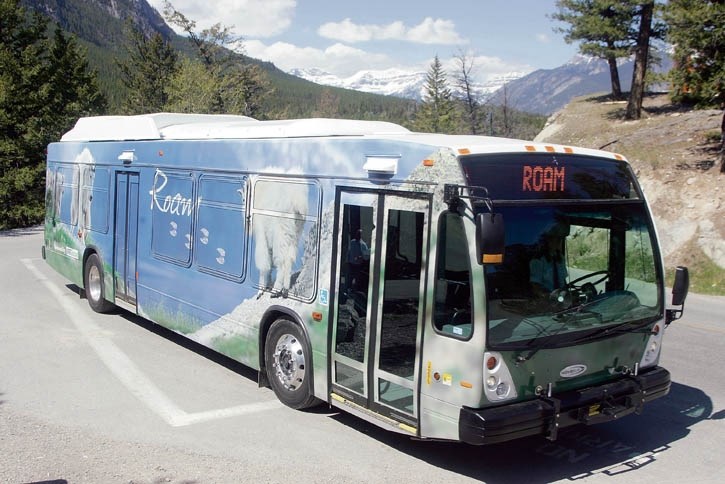A plan to double regional Roam transit service between Banff and Canmore during peak periods is one step closer to reality. At a meeting Monday (Nov.
A plan to double regional Roam transit service between Banff and Canmore during peak periods is one step closer to reality.
At a meeting Monday (Nov. 23), Banff council supported the move and now awaits a decision from Canmore's politicians, who are expected to discuss local and regional bus service at a meeting on Dec. 1.
If Canmore supports the move, the regional service would go from hourly to every 30 minutes from 6:30-9:30 a.m. and from 3:30-7 p.m. weekdays. There's also a plan to add an 8 a.m. and 10 p.m. bus to the Saturday schedule.
Banff officials say they saw a dramatic increase in the number of bus riders when they increased bus service on Sulphur Mountain this year, and believe the same will be true for the regional service.
“This is such a true case study of if you build it they will come. I'm just really, really proud of Banff's commitment to regional transit,” said Banff Mayor Karen Sorensen.
“It's just incredibly rewarding to make controversial decisions like that, and then sit here a few years later and go, ‘phew, that was the right call.' ”
The regional route has proved to be a popular addition to public transit in the Bow Valley, with ridership increasing from 3,952 riders per month when the service began in January 2013 to a peak recorded of 9,581 in July 2015.
Service increases have been shown to increase ridership both in previous studies and in Banff - with ridership on the Sulphur Mountain service in Banff increasing 29 per cent when transit service was doubled for the summer of 2015.
A survey conducted by Bow Valley Regional Transit Services Commission (BVRTSC) indicated 49 per cent of respondents wanted more frequent service as the most desired enhancement to the regional service.
In addition, 32 per cent of non-regular regional route riders reported a high likelihood of using the service more often if frequency was doubled.
Martin Bean, BVRTSC's chief administrative officer, said an increase in regional service would require purchase of a new 30-foot bus.
“I'm passionate about doubling the regional service,” he said. “We're leaving people behind, either because we're full or we're having a lot of standees, or because they can't take their bikes.”
Bean said it might take a little time to build up ridership, but he believes making the service every 30 minutes in peak periods will address many issues.
“People who are typically in their cars will take a bit of convincing, but once you get a couple of bad road days, and use the bus once, all of a sudden it makes sense to use the bus,” he said.
“We arrive in Banff five minutes before the hour so it's tight for people to get to work if they start work on the hour. If they finish work at five o'clock they have to wait to take the six o'clock bus, whereas if the bus was at 5:30, they'd be good.”
The anticipated net cost of doubling the regional service between Banff and Canmore based on cost recovery of 20 to 30 per cent is $120,000 per year -- $60,000 each for Banff and Canmore. Banff already has $60,000 set aside in its 2016 operating budget.
The cost for a 30-foot bus would be approximately $350,000, including fare box, bicycle trailer and NextBus installation.
If approved by the Province of Alberta, two-thirds of this cost will be covered by Green TRIP funding, which leaves $116,666 to be split between Banff and Canmore. The need for this spare bus is contingent upon the doubling of frequency.
Adding an hour of service to both ends of the regional service between Banff and Canmore on Saturdays is expected to cost about $2,800 to each town.
Councillor Stavros Karlos said he supports more regular service, noting it is the most cost-effective approach for Banff ratepayers to tackle Banff's transportation woes in the absence of long-term solutions.
“Last year I sat at this table and shot it down on a matter of budget, and I was wrong to do that,” he said. “I now believe that, based on our experience with a limited number of routes, that increased frequency results in increased use.”
Karlos said he also encourages Canmore council to fund an increase for the regional service.
“I'm very hopeful that our partners at the Town of Canmore will see their way forward in helping to come up with transportation solutions for the entire Bow Valley,” he said.
